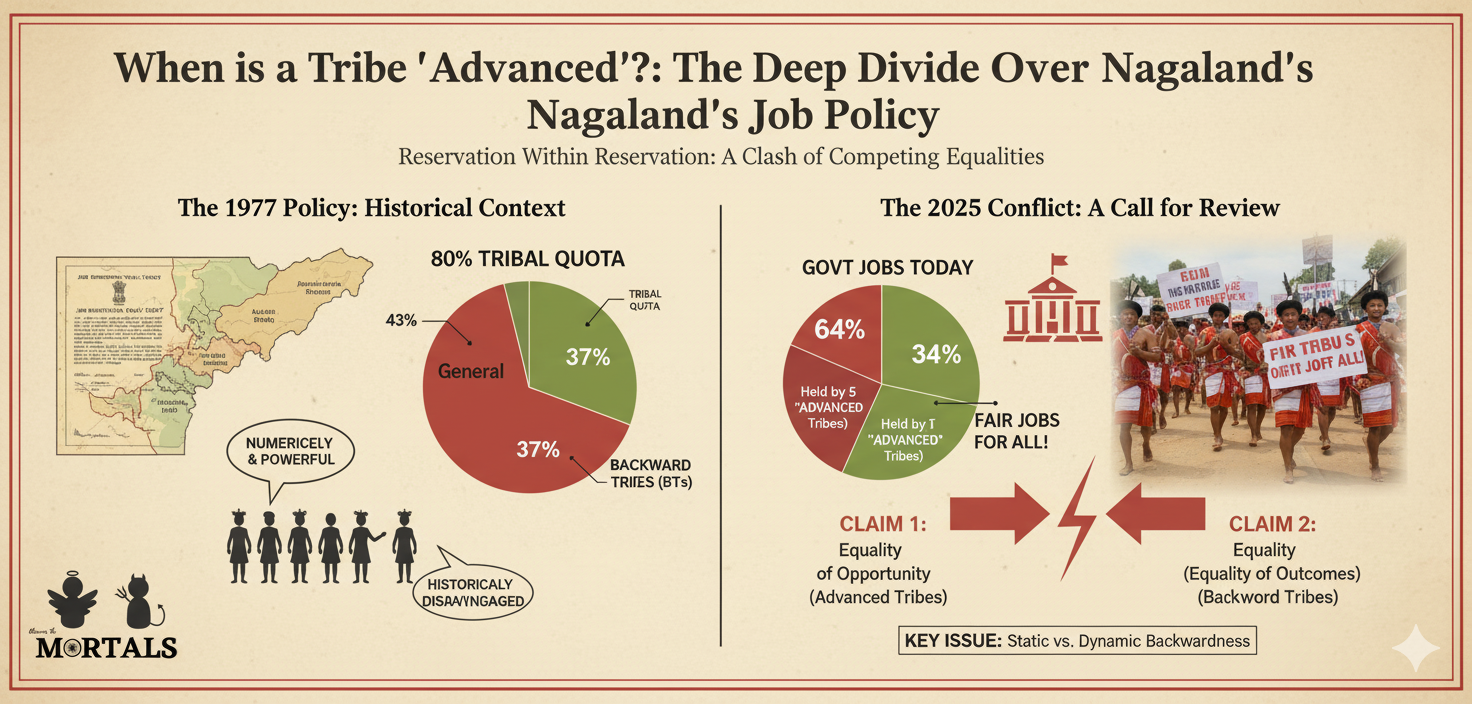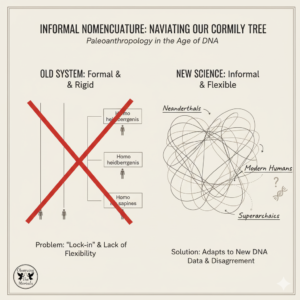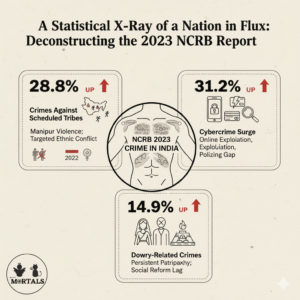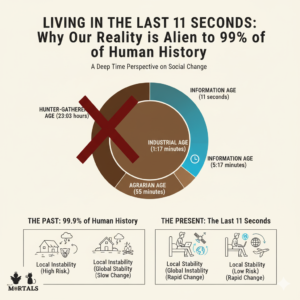The policy of reservation in India is typically understood as a framework for providing opportunities to historically disadvantaged groups like STs, SCs, and OBCs. But what happens when the logic of reservation is turned inward, within a state where almost the entire population is classified as a Scheduled Tribe? This is the complex and politically charged situation unfolding in Nagaland. A 48-year-old job reservation policy, once seen as a tool for upliftment, has now become the epicenter of a major conflict, pitting a coalition of so-called “advanced” tribes against those designated as “backward.” This case study explores a fascinating and tense battle over fairness, historical disadvantage, and the very definition of who is marginalized in modern India.
The Information Box
Syllabus Connection:
- Paper 2: Chapter 6.2 (Tribal Administration & Politics), Chapter 8 (Social Change among Tribes), Chapter 3 (Caste System: Parallels with Tribal Stratification)
- Paper 1: Chapter 4 (Political Anthropology: Factionalism, Ethnicity), Chapter 2.5 (Social Stratification)
- GS-2: Reservation Policy
Key Concepts/Tags:
- Reservation Within Reservation, Nagaland, Naga Tribes, Affirmative Action, Backward Tribes, Identity Politics, Relative Deprivation
The Setting: Who, What, Where?
The setting is the tribal-majority state of Nagaland in Northeast India. The conflict involves two major blocs:
- A coalition of five numerically and socio-economically powerful tribes (Angami, Ao, Lotha, Rengma, and Sumi), who are now referring to themselves as “advanced tribes.”
- A group of 11 designated “Backward Tribes” (BTs), who are the beneficiaries of a special sub-quota within the larger tribal reservation.
The policy at the heart of the conflict is a state government job reservation system, established in 1977, which sets aside 37% of an 80% tribal quota specifically for these BTs. The “advanced” tribes are now demanding a complete review, and potential scrapping, of this sub-quota.
The Core Argument: Why This Study Matters
This is a critical case study on the evolution and inherent complexities of affirmative action policies in a diverse society.
- The Politics of “Reservation Within Reservation”: This case is a prime example of the challenges of sub-categorization. It demonstrates that a broad constitutional category like “Scheduled Tribe” is not a monolith. It contains immense internal diversity and disparities in development. This has led to demands for a more granular and equitable distribution of reservation benefits, creating a framework of “reservation within reservation.”
- The Dynamic Nature of “Backwardness”: The core argument of the “advanced” tribes is that the socio-economic and educational landscape of Nagaland has changed dramatically in the 48 years since the policy was created. They are essentially arguing that the category of “backward” is not a permanent, static label but a dynamic state that should be re-evaluated over time. This is a central debate in the anthropology of social change.
- A Clash of Competing Equalities: This conflict is not a simple case of a reserved group versus an unreserved one. It is a clash between two different, and valid, claims to justice:
- The “advanced” tribes are arguing for equality of opportunity in the present, contending that a policy designed to correct a past imbalance is now creating a new imbalance.
- The “backward” tribes are arguing for equality of outcomes, contending that deep-seated historical and geographical disadvantages persist and that the policy is still essential to bring them on par. The government’s own data—showing the five “advanced” tribes hold 64% of jobs versus the BTs’ 34%—adds a complex layer to this debate.
The Anthropologist’s Gaze: A Critical Perspective
- Intra-Tribal Factionalism: An anthropologist would analyze this not just as a policy dispute, but as a powerful expression of intra-tribal politics and factionalism. Naga society is composed of numerous distinct tribes, each with its own history and political interests. This conflict over a scarce and valuable resource (government jobs) has become a modern arena for these inter-tribal rivalries and alliances to play out, hardening identity boundaries between the “advanced” and “backward” blocs.
- “Development” as a Source of Conflict: This case study is a perfect example of how state-led “development” and the distribution of state resources do not always lead to social harmony. Instead, these resources become a focal point of intense competition and conflict, generating new social divisions and political tensions within and between communities.
- The Bureaucracy of Identity: The ongoing stalemate over the very name of the review commission (“Job Reservation Commission” vs. “Reservation Review Commission”) is a fascinating micro-detail. An anthropologist would see this not as a trivial semantic issue but as a deeply symbolic political struggle. The name is seen as signaling the government’s true intent and the legitimacy of the entire review process, showing how bureaucratic language itself is a key battleground in identity politics.
The Exam Angle: How to Use This in Your Mains Answer
- Types of Questions Where It can be Used:
- “Critically analyze the policy of ‘reservation within reservation’ in India.”
- “The category ‘tribe’ is not a homogenous one. Discuss with reference to the challenges in tribal administration.”
- GS-2: “Affirmative action policies need periodic review to remain relevant to contemporary social realities. Analyze.”
- Model Integration:
- On Reservation Policy (GS-2/Anthro): “The complexity of affirmative action is evident in the ‘reservation within reservation’ debate, such as the ongoing conflict in Nagaland. Here, a group of ‘advanced’ Naga tribes is demanding a review of a nearly 50-year-old sub-quota for ‘Backward Tribes,’ highlighting the challenge of ensuring equity within a larger beneficiary category and the dynamic nature of backwardness.”
- On Tribal Politics (Paper 2): “State resources often become a source of intra-tribal conflict and factionalism. In Nagaland, the state’s job reservation policy has become a major political fault line between a coalition of ‘advanced’ tribes and the designated ‘Backward Tribes,’ turning affirmative action into a key arena for inter-tribal competition.”
- To offer a nuanced view: “The job quota debate in Nagaland represents a clash of competing claims to justice. While one group argues for equality of opportunity based on current achievements, the other argues for equality of outcomes to rectify historical disadvantages that persist within the larger tribal society, a dilemma that confronts affirmative action policies globally.”
Observer’s Take
The conflict in Nagaland is a fascinating and deeply important microcosm of the future of affirmative action in India. It moves the debate beyond the familiar binary of “reserved vs. unreserved” and forces us to confront a much more complex and uncomfortable question: how do we ensure equity within beneficiary communities themselves? It is a powerful demonstration that “tribe” is not a monolithic category and that the path of development is almost always uneven. The political stalemate over a 48-year-old policy is a crucial reminder that as societies change, our tools for social justice must also be brave enough to evolve, however politically difficult that process may be.





